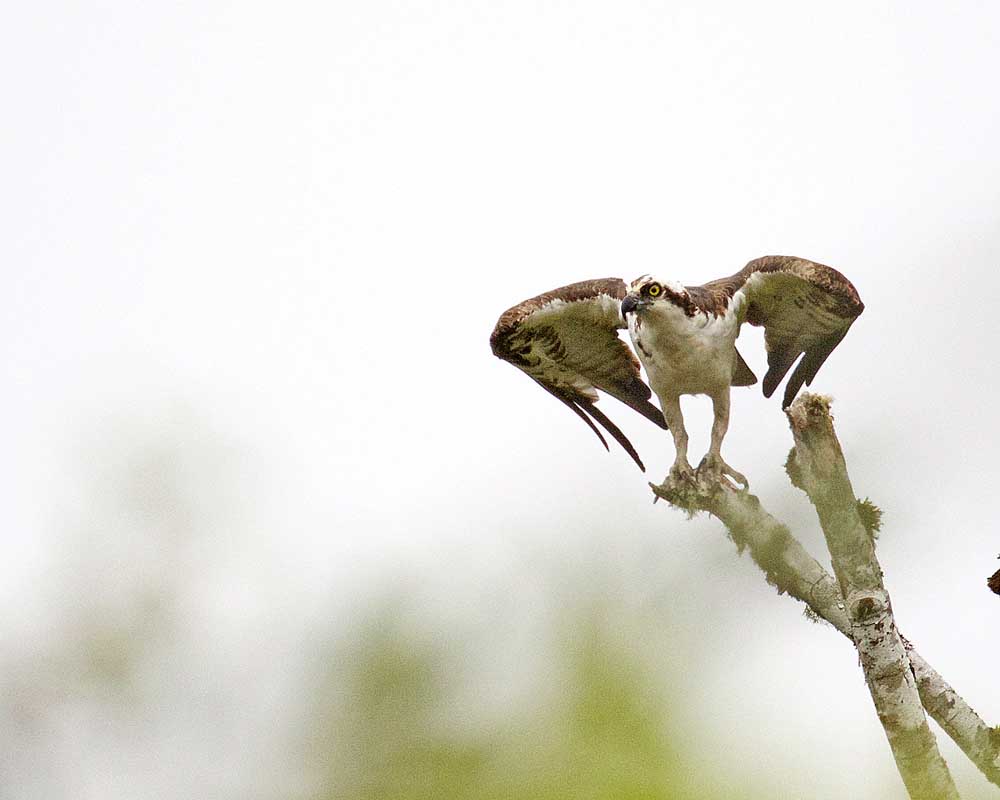Birding: It may seem like forever before we see this bird again…
Published 9:30 am Friday, January 15, 2021

- An osprey is poised for take-off to find a fish for its meal.
One of the rarities that has been seen by many, many birders is still here! At least at the time of writing! It stayed for the Christmas Bird Count and long afterwards it was still being observed in the Nahcotta area. We see large numbers of marbled godwit on the Peninsula, but we seldom see one of its relatives, namely the bar-tailed godwit. If we do, it is generally observed in the fall. There are a little over five records for this bird both here and in all of Pacific County. The last time I observed it was in October 2015 on the mudflats of Baker Bay at low tide to the east of the Ilwaco Harbor.
Trending
The bar-tailed godwit generally hangs out with a flock or at least a few marbled godwits. It is light gray in appearance, wears a distinct white eyebrow and has very short legs. Its shorter legs are quite noticeable when the bar-tailed is standing next to a marbled godwit. On looking at it, you will notice that it appears to be slightly smaller, which it is, by about 2 inches. It forages by probing in the mud just like the marbled godwits
The bar-tailed godwit prefers coastal mudflats and sandflats. This is exactly the habitat where the bird has been seen on the Peninsula. It breeds on the low tundra in Alaska, and according to Sibley’s most recent field guide to the birds, most records of the bar-tailed godwit are of single birds usually seen in a mixed flock of the other “big boys”!
Other rarities are showing up in our area as well. The hooded oriole is one example. It has been observed fewer than five times in Pacific County, according to the Pacific checklist for 2020. Another unusual happening is that some species are staying around longer. The osprey observed in Nahcotta for quite a while now is a perfect example. It should be in warmer climes by now! The question that arises is, “Why might this be happening”? It seems from the literature I have been reading of late that climate change may have something to do with the phenomena of some bird species either not leaving and/or staying longer. Science tells us that rising temperatures and shifting weather patterns affect birds. The impact could be dire, in that it may affect birds’ ability to find food and ultimately to breed successfully. As you can imagine, this not only affects local populations over time but also populations continent-wide. Scientists have found as climate varies it affects the population dynamics in an increasing number of species. Finding food at breeding time is essential if a bird is to be successful at raising its brood. Migratory birds, such as the bar-tailed godwit, seem be affected the most, although local populations can also be affected, according to National Audubon Society and Nature Canada.
Trending
I last wrote about the bar-tailed godwit in 2015 and I suggested then that we should look for it because it may be forever before one stops by again. Who knows whether this will ring true this time around, but five years between sightings seems like forever, doesn’t it?









